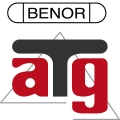After 25 years (for installations permanently under water) or 15 years (for installations not permanently under water), a sprinkler protection system must undergo a very precise inspection, in order to check its durability.
In addition to the inspection, one of the tasks involves taking sprinkler heads from the installation as a sample. These heads will be subject to a series of laboratory tests, in order to check that the heads fulfil all their functions and are able to detect and have the expected action on the fire.
Four different parameters will be assessed for this purpose:
- K factor: in other words, the flow rate delivered per head. The flow rate corresponds to a flow rate delivered in l/min@1bar. Although it is hard to imagine that it could change as it ages, certain types of "hard" deposits or obstructions may change the water flow cross-section;
- Activation at 1 bar: in order to guarantee its activation under the calculated conditions (zone in question or number of sprinklers according to requirements), it is also essential for the sprinkler to work under low pressure. Depending on the water condition and characteristics, it is possible for particles to collect in the moveable parts of the sprinkler, so it can no longer work correctly under low pressure.
- Activation temperature: the sprinkler is designed to operate at a certain temperature, which will be set according to the reference standard methods. To ensure that there will be no drift in this temperature, it should be checked using a thermostabilised bath, whose gradient is set at a low temperature elevation (0.4°C to 0.7°C) to prevent errors due to the component's inertia.
- Water distribution: an even distribution of the water is also a factor, as it will affect the action of the sprinkler on the fire. Again, the presence of particles collecting in the head or on the deflector may block this distribution.
A representative sample may be taken in accordance with the applied reference standard for the installation, which will depend on the number of heads installed (e.g.: CEA4001 or EN12845):
20: number of sprinklers installed < 5,000
40: 5,000 < number of sprinklers installed < 10,000
60: 10,000 < number of sprinklers installed < 20,000
80: 20,000 < number of sprinklers installed < 30,000
100: number of sprinklers installed > 30,000






